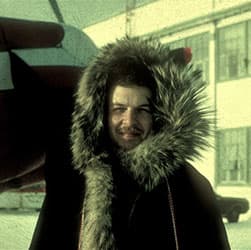As a young dentist, spending my formative years working in these wild areas helped me develop vital skills and focused my interest on paediatric dentistry. Over the course of three years my work taught me lessons on adaptability and, more importantly, on how to take each opportunity that presented itself and use it to build a career that I could have never intentionally designed.
Working in the backwoods of British Columbia
I was practicing in the NHS, early in my career, when I decided I wanted to travel. After discussing possible positions with colleagues at the dental hospital where I worked, I was directed towards a job opportunity in the backwoods of British Columbia. For the next couple of years, me and my first wife travelled from the middle of Vancouver Island to the Yukon, from the Queen Charlotte Islands in the Pacific to the Rocky Mountains with the prime purpose of providing dental care for children under the age of nine. However, at the end of the day, we would also help any adults and teenagers that needed it. We performed vital work for those communities, who often only had access to a dentist for two weeks, once every 18 months.

